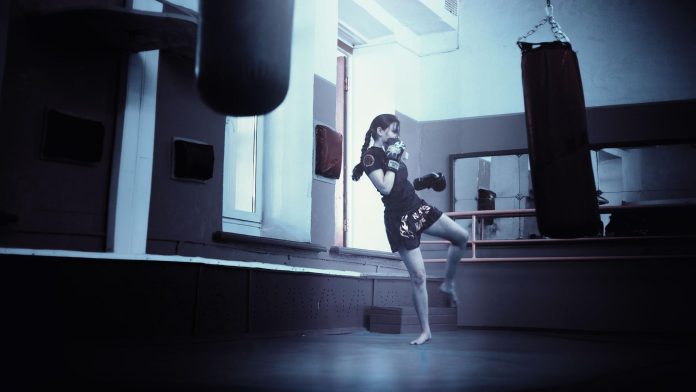Ever wondered what goes on inside the fascinating yet sturdy boxing gloves? If you’re new to boxing, the wholesale boxing gear can seem like a very heavy yet efficient equipment. And the manufacturing process of these gloves is quite a tale to tell.
There are multiple manufacturers that make boxing gloves, and each one makes them somewhat differently. You may easily find a boxing glove in nearly any shade, style, or pattern that you like.
Although every company has their specific process for the gloves, there are some steps and procedures that are common to the manufacturing of the gear. Here’s a brief breakdown of how the boxing gloves are made and what actually goes inside.
Raw Materials Used In Wholesale Boxing Gear
High-end quality colored leather, typically cowhide or goatskin (because of the stability and versatility), forms the body of a boxing glove. Vinyl gloves are of lower quality, however the majority of professional and amateur boxing organizations demand the usage of leather gloves.
Nylon taffeta is used by most manufacturers, however some companies encase their gloves with an additional layer of leather. High-density polyurethane, polyvinyl Chloride (PVC), and latex provided in the form of sheets is used for padding. These materials are hand-sewn inside the gloves.
Cotton materials have traditionally been utilized as padding, and several manufacturers still use them to pad a portion of their wholesale boxing gloves today. Horsehair is also used by some producers.
The Design Of Your Wholesale Boxing Gloves
The padding of the glove is the main design element. A foam material must absorb energy by compressing in order for the gloves to perform efficiently. It captures more power as it compresses more.
When a glove is compressed too much, it degrades into a thin layer of dense medium and is no longer functional. Padding layers can be added or removed to alter the weight of a glove.
The padding would be compressed beyond its functional range by hits delivered by the heavyweight fighters, while blows delivered by the lightest boxers would barely compress the material at all if the same glove weight were required for all weight classes. This is why there are different weight gloves for boxers belonging to different weight categories.
To prevent boxers from elbowing each other directly in the eye, all gloves must either be thumbless or have the thumb compartment connected to the glove’s body. The knuckle region of gloves must be coloured white for scoring purposes in the major international competitions.
The Manufacturing Process
Trimming the exterior elements is the initial stage of production for the gloves. Boxing gloves’ manufacturing materials often tell a lot about the quality. The leather used to make boxing gloves is often light cowhide or synthetic leather.
However, leather gloves are typically far more dependable and of better quality than any other material. The thumb is sometimes cut from the same piece of leather, and other times it is cut separately and attached to the other sections by sewing.
The type of build and padding utilized are the main deciding factors in the first step. The Velcro cuff and any patches are often assembled at this point as well, though they are temporarily kept apart from the rest of the custom boxing glove.
Typically, this is the step when the gloves are printed with any patterns. To prevent printing problems, it’s crucial to give graphics to the materials when they’re still plain.
Also know about sflix
This will be much more difficult to accomplish and will have a smaller printing area if done after the glove fabrication has begun.
Prior to inserting the padding, the glove’s shape is formed and sewing begins at this stage. The majority of the seams and stitches are on the inside of the glove when it is inverted since the base of the glove is initially sewn inside out. At this time, the gloves are also stitched with features like grip hooks and permeable netting.
Adding In The Padding
Horsehair has traditionally been used to line the wholesale boxing gear, and some high-end brands still utilize that. Today’s boxing gloves often incorporate IMF or a combination of multilayer foams.
Various thicknesses can be used in different parts of the glove thanks to the stacked foams. The majority of brands use a special mix of padding. Usually, these maintain the shape of the gloves thanks in part to the leather and in part to the method of layering.
IMF, on the other hand, holds its shape much more naturally because it is fashioned and fixed in the shape of the boxing gloves.
Then, normally, with the inner lining of the glove, the padding is put into the pieces that were previously stitched together. At this point, the glove begins to take shape and take on an understandable appearance. The bottom of the glove is then connected after the bottom of the cuff and its lining have been stitched together.
Finishing The Gloves
If the glove will have laces, lace holes will be punched in a design that is placed over the opening on the glove’s palm. The Velcro strap will, however, be sewn into place if the gloves have Velcro closures. To complete the glove, a small leather strip is folded over the outside edges of the cuff and palm and stitched into place.
As mentioned earlier, every single company has their own specific methods for manufacturing their custom made boxing gloves. If you are looking for a brand that incorporates all the rules and regulations and design criteria into their production process, Wholesale Boxing Gear is one of the best choices for you.
Also know about netflix/tv8










